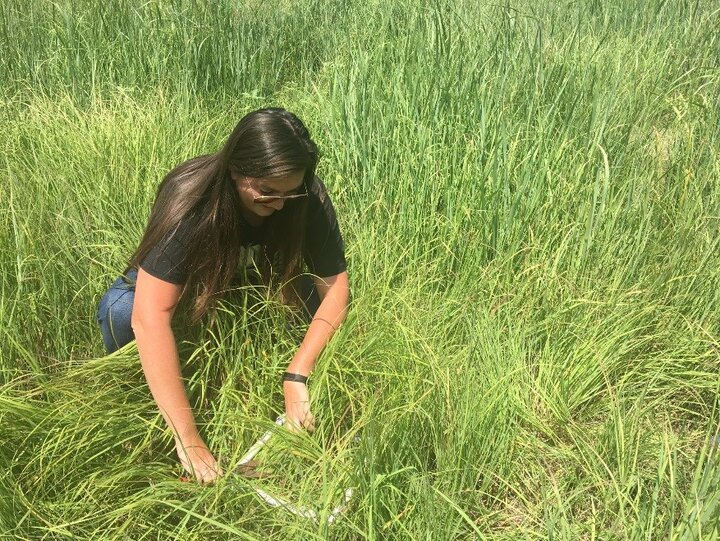Hillary Booher, student at Purdue University and 2017 University of Nebraska-Lincoln Integrated Agronomic Systems Intern
Rob Mitchell, Research Agronomist, USDA-ARS Wheat, Sorghum and Forage Research Unit
Daren Redfearn, Nebraska Extension Forage Crop Residue Specialist
Marty Schmer, Research Agronomist, USDA-ARS Agroecosystems Management Research Unit
Alexa Johnson, University of Nebraska Lincoln


Recent improvements in forage yield and nutritive value of indiangrass [Sorghastrum nutans (L.) Nash], along with its wide range of adaptation should increase its use in bioenergy and forage production, conservation practices, and reclamation projects in the central Great Plains. Currently, indiangrass is used primarily as a component in warm-season pasture and is almost always seeded in mixtures with big bluestem, switchgrass, and other C4 grasses. When seeded in monocultures, seeding rates from 20 to 40 pure live seed (PLS) per square foot are generally recommended, however, there is limited research as to ideal seeding rates for indiangrass.
To develop better seeding rate recommendations for indiangrass, we evaluated seeding rate effects on establishment-year growth and long-term dry matter (DM) yield in two indiangrass cultivars — ‘Oto’ and ‘NE 54’ — in a study conducted near Mead from 2003 to 2006. Cultivars were seeded on May 15 at 100, 200, 300, 400, or 500 pure live seed (PLS) per square meter. These five seeding rates correspond to 10, 20, 30, 40, and 50 PLS per square foot.. Either mowing or Plateau herbicide was included as a method of weed control. Plateau was applied at four ounces per acre as a pre-emergent weed control, and mowing was to a six-inch stubble height, as needed, during the growing season. In the spring of the second growing season, and in each of the subsequent growing seasons, plots were fertilized with 100 lbs of nitrogen per acre. At the end of each growing season, indiangrass biomass was harvested to evaluate dry matter yield. Individual tillers were counted to measure tiller density.
Tiller number during the establishment year was nearly always greater for Oto than NE 54 across all seeding rates. For NE 54, tiller number was similar for the 10, 20, 30, and 50 PLS/ft2 seeding rates, with the 40 PLS/ft2 seeding rate having 40% more tillers than the 10 PLS/ft2 seeding rate during the establishment year (Figure 1).
Dry matter yield was greater for Oto than NE 54 across all seeding rates. However, increasing seeding rates above 20 PLS/ft2 did not increase DM yield for either Oto or NE54 indiangrass after four years (Figure 2). These results suggest that seeding rate may affect indiangrass stand uniformity, but not affect the dry matter forage yield.

About the Lead Author
Hillary Booher is one of seven undergraduate students completing an Integrated Agronomic Systems Fellowship at the University of Nebraska-Lincoln in summer 2017.
She returned to Purdue University to complete a bachelor's degree. Her major is in horticulture with a plant science concentration.
Support
Support for this project was provided by the USDA NIFA Agriculture and Food Research Initiative: Education and Literacy Initiative–Undergraduate Experiential Learning Fellowship Program and the University of Nebraska-Lincoln Department of Agronomy and Horticulture.

